Lamb Kebabs: How to Cook the Real Thing Right
We Americans love our grills, but we in no way invented them. Cultures all around the world have their own special take on grilling, and the various cuisines of the Eastern Mediterranean are right up near the top of the list for me. Their use of herbs and spices, their fresh-tasting food—it’s just…good.
Among the great dishes of that region, the various kebabs stand out. We tend to think of kebabs (sometimes spelled kabobs here) as chunks of meat that are skewered and grilled, and that is definitely one style. But another very authentic style (the one we’ll be discussing here) involves forming ground meat around a skewer before grilling it.
The version of this kind of kebab that we’ll be making is the Turkish Adana kebab. Hailing from the south-eastern coast of Turkey, the Adana kebab is made of ground lamb (delicious!) and is seasoned with chili, salt, cumin, and sumac. They are simplicity itself, but you’d never know it from tasting them.
Ground meat, of course, requires careful temperature monitoring, so we’ll be employing our trusty Classic Super-Fast® Thermapen®.
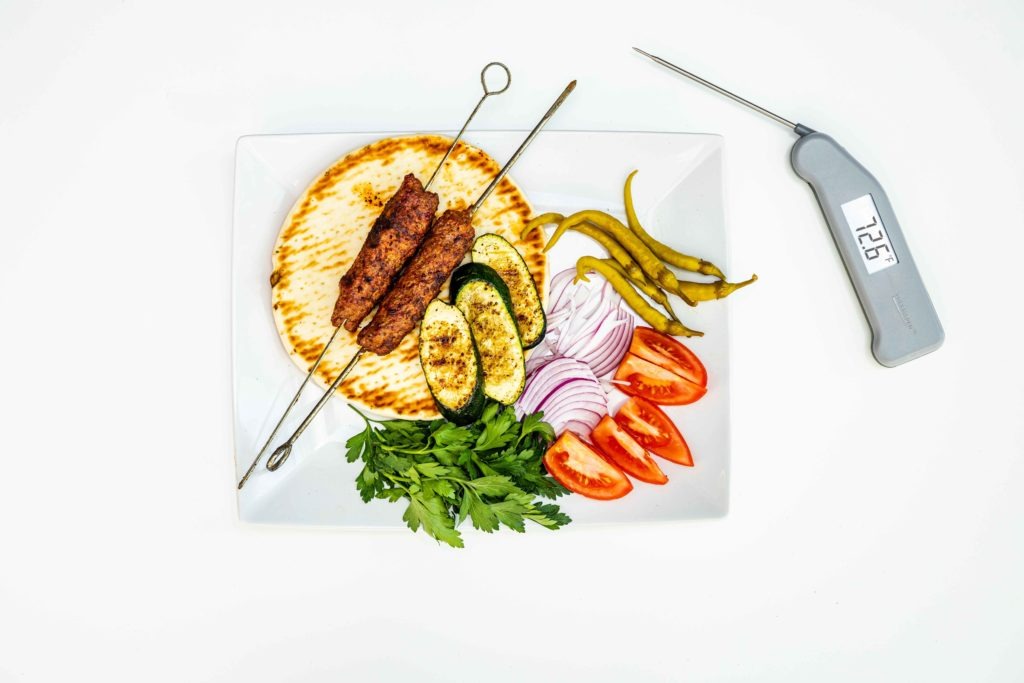
Why make ground-meat kebabs?
There are plenty of advantages to ground meat kebabs. Tenderness, for one. Kebabs made out of chunks of meat are great—if you have good, tender meat, but that tends to be expensive. Ground kebabs can be made from cheap, tougher cuts, many of which are even more flavorful than things like, say, tenderloin.
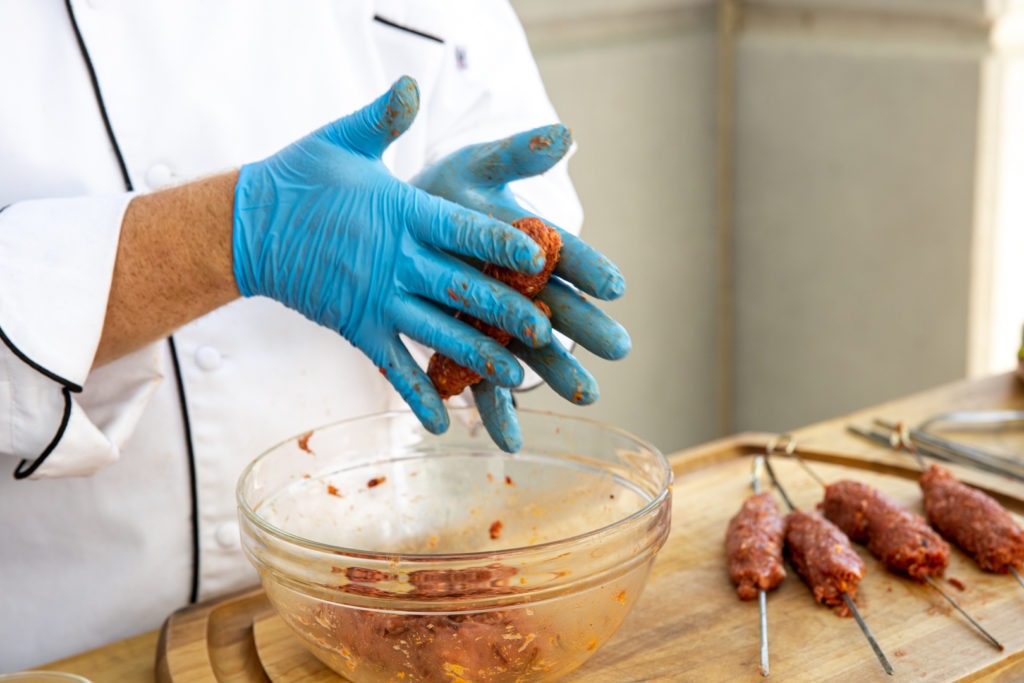
Another advantage is even cooking. By packing ground meat in an even cylinder around the skewer, you eliminate the worry of overcooking smaller chunks or undercooking larger ones.
And, of course, there is seasoning. I know this goes against common perception, but marinating…doesn’t do a lot. It’s been scientifically found that marinades usually only penetrate up to maybe 1/8 of an inch into the surface of the meat, so the center is still unseasoned. Of course, that’s fine. Steak is still delicious when only the outside is seasoned! But for through and through seasoning, you have to get the seasonings mixed in with the meat, and I’m not about to try to inject individual cubes! By mixing seasonings with ground meat, you can get a deeper flavor, one that can stand up to more heavily seasoned sauces and accompaniments.
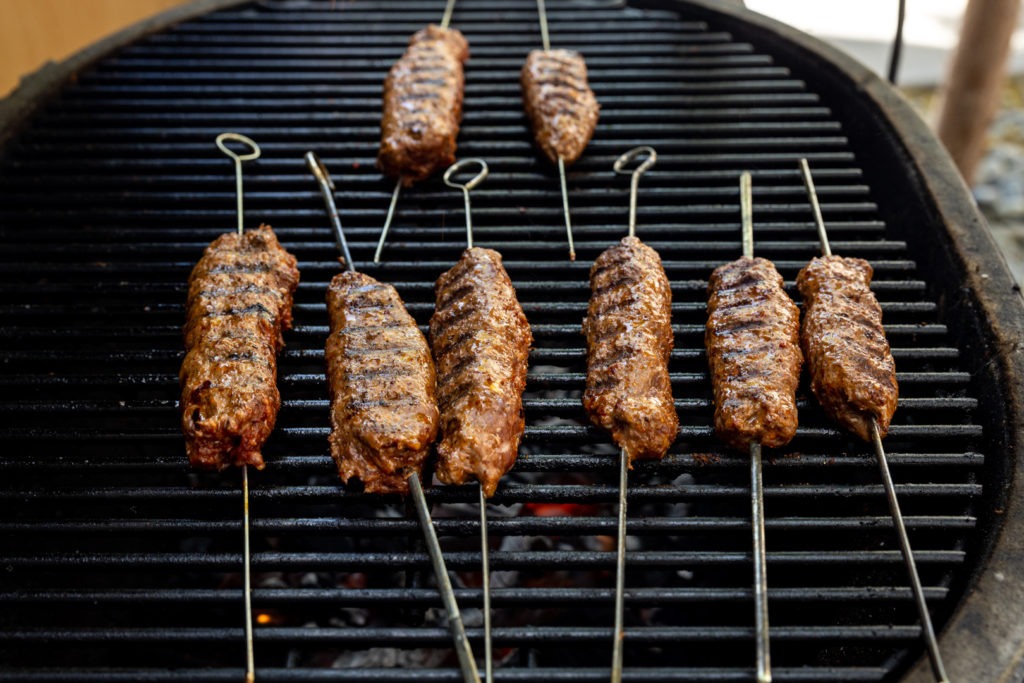
Thermal challenges of ground-meat kebabs
Traditionally, these kebabs are cooked over direct, charcoal heat, and that’s how we do it, too. The flavor of the charcoal compliments the richness of the meat and the sharpness of the spices. And the smell of these kebabs cooking over the hot coals is amazing. Get a bed of coals going and preheat your grill for direct cooking. You can use a gas grill if you have one. Go for medium-high heat on the gas grill.
Of course, ground meat kebabs present the same thermal challenges as all ground-meat foods: they need to be thoroughly cooked to kill pathogenic bacteria that can hide in the mince. Cooking to 160°F (71°C) will take care of that, and you can use your Super-Fast Thermapen to check each one on the grill as you cook. Hot spots on the grill and variations in kebab thickness will mean that they all cook at different rates. Having the ability to quickly temp each of them to ensure proper cooking is key.
On mixing the meat
These kebabs are essentially skinless sausages. In order for them to hold together, you need to mix the meat enough for a myosin network to form. You may remember reading about that in our bratwurst post, but basically, mixing meat a lot creates a fibrous stickiness that holds things together and helps to retain moisture when cooking. We need that for the meat to adhere to itself on the kebab. Mix it until you can lift some up out of the bowl and a hanging piece won’t fall off easily, like this:
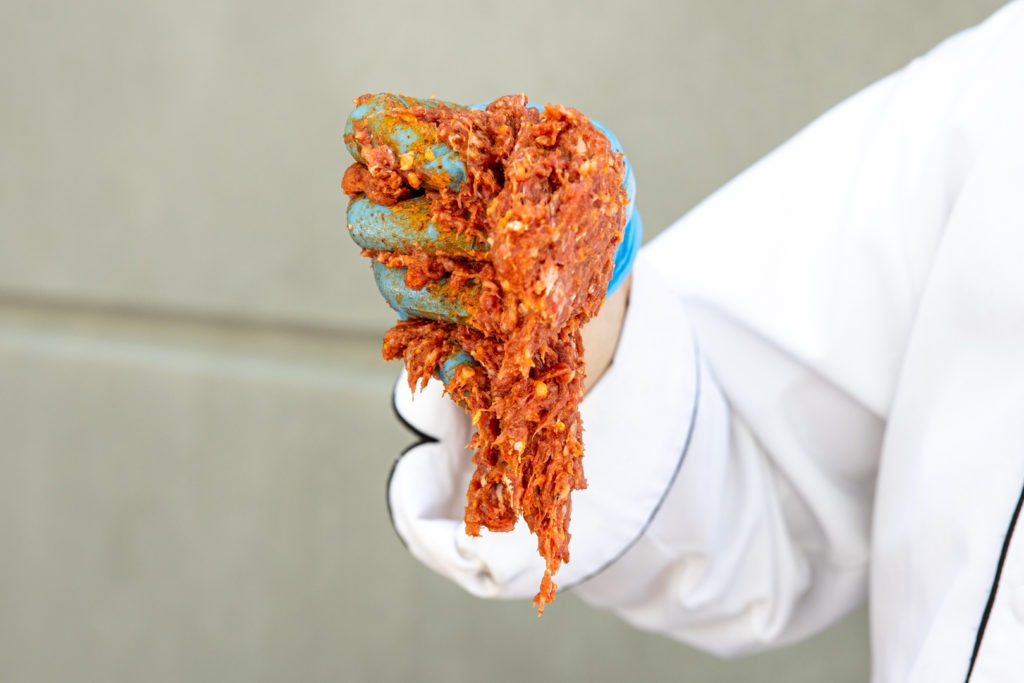
Note on ingredients:
This recipe calls for sumac, which is a ground, dried berry that is used frequently in eastern Mediterranean cooking. It provides an earthy tartness that is wonderful. It is usually available at well-stocked supermarkets in the spice aisle. If you can’t find it, a squeeze of lemon juice will do as a substitute. (Just reduce the amount of water accordingly)
The recipe also calls for seedless pepper flakes. Turkish Aleppo pepper or Urfa pepper is best here. Both have a texture that lies between crushed red pepper flakes and paprika—flakes still, but very small ones—and no seeds to get in the way. They are spicy, but won’t kill you with heat. If you can’t find either of those at your grocer, check an Asian market for Korean gochugaru, another small-flake seedless chili pepper.
Print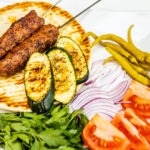
Grilled lamb kebabs, Turkish style
Description
Based on J. Kenji López-Alt’s recipe at SeriousEats.com
Ingredients
For the kebabs:
- 1 lb ground lamb
- Kosher salt
- 2 tsp ground cumin, divided
- 2 Tbsp ground sumac, divided
- 2 Tbsp ground seedless pepper flakes such as Aleppo or Urfa pepper, divided
- 2 Tbsp ice-cold water
For serving:
- 1 red onion, thinly sliced
- 6 pieces flatbread (like pita)
- 1 cup fresh parsley leaves
- 2 medium tomatoes, sliced
- Pickled peppers, such as pepperoncini or sport peppers
Instructions
- Mix together the lamb, 2 tsp salt, 1 tsp ground cumin, 2 tsp sumac, and 1 Tbsp red pepper flakes. Knead and squish it together until it becomes sticky and tacky-fibrous. Add the water and continue to knead it together until well mixed. Chill in the refrigerator.
- Start your charcoal and preheat your grill.
- Combine the remaining cumin, 2 tsp sumac, and chili flakes in a small bowl. Add 2 tsp salt.
- Toss the thinly sliced onion with the rest of the sumac (2 tsp) and salt to taste. Set aside.
- Divide the lamb mixture into 6-10 equally sized balls of meat.
- Form each ball into a long, flat shape on the skewers (flat metal ones are best for this). Moistening your hands with water will make the process easier.
- Set your kebabs on the grill, sprinkle them with some of the spice mixture, and cook, turning every couple minutes two get even browning. Sprinkle more spice mixture on as you cook and turn the kebabs.
- After about 10 minutes, start checking the kebabs with your Thermapen.
- As the lowest internal temperature of each kebab reaches 160°F (71°C), remove them from the grill.
- Warm the flatbreads on the grill and serve the kebabs with the dressed onions, the peppers, parsley, and tomato.
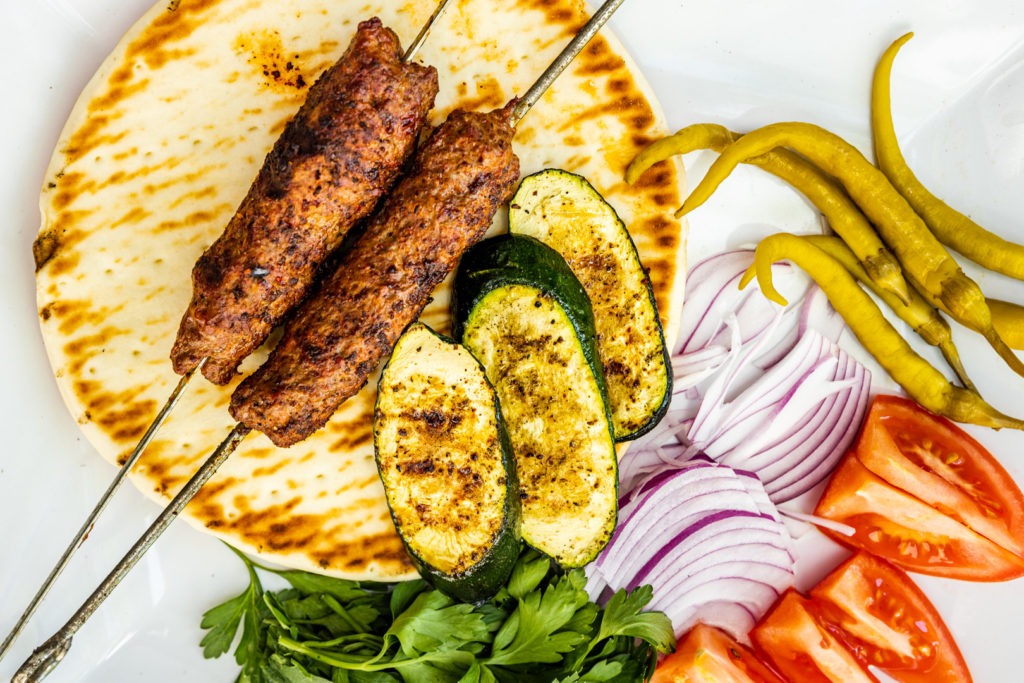
If you want to surprise your family or your guests with something unique and delicious from the grill, these Mediterranean-style kebabs are just the thing. They are stunningly tasty, they are easy to make, and they are fast to cook. And with the help of a fast and accurate thermometer like the Thermapen, you can bet on them being cooked just right every time. Try these kebabs this weekend and enjoy something new!
Shop now for products used in this post:


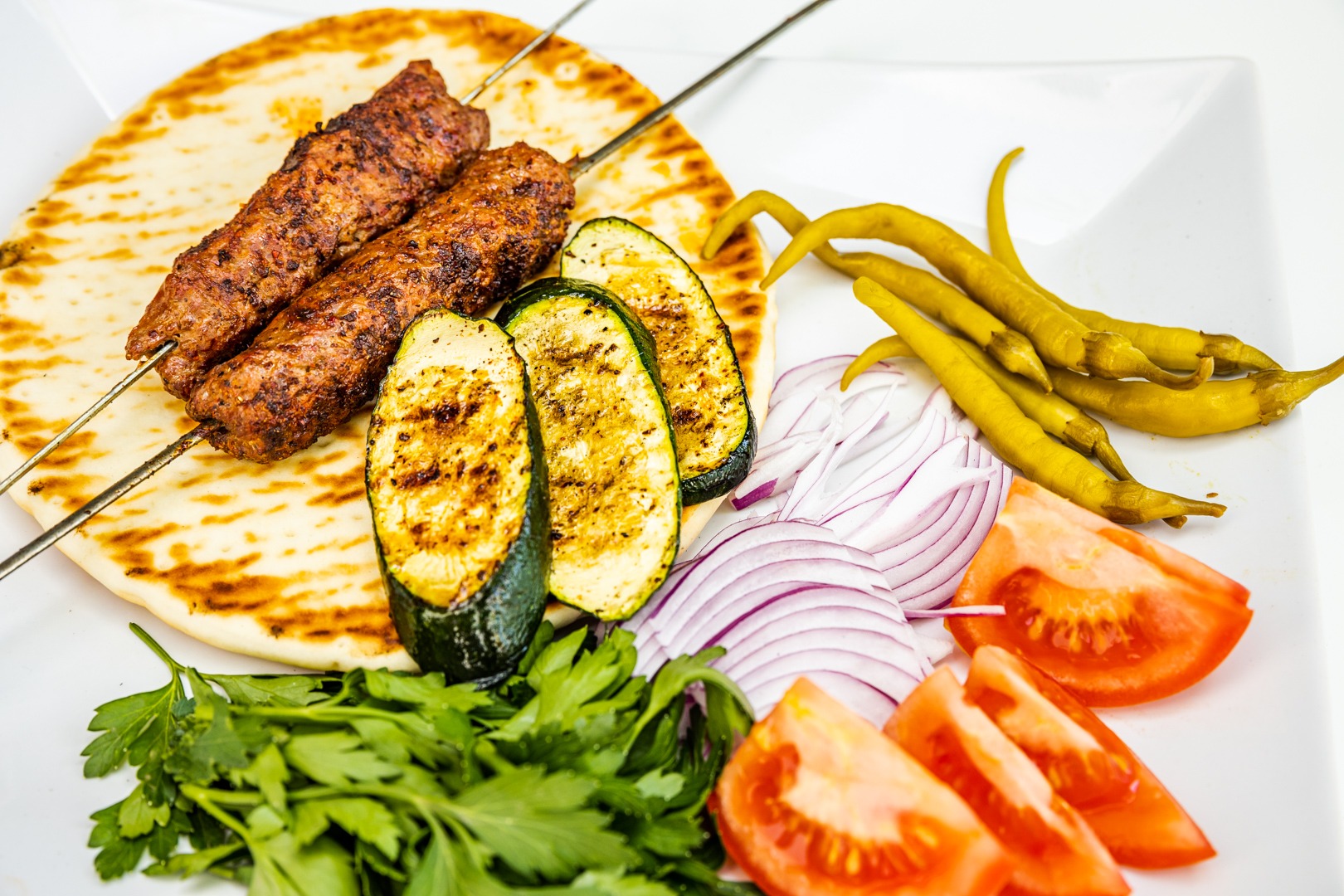
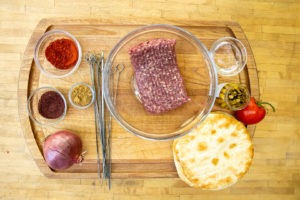
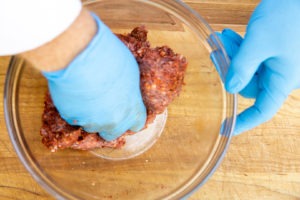
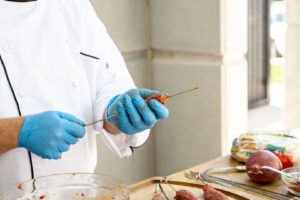
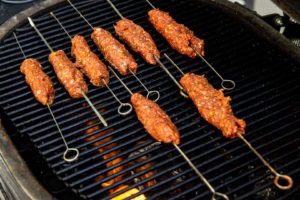
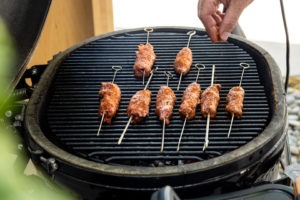
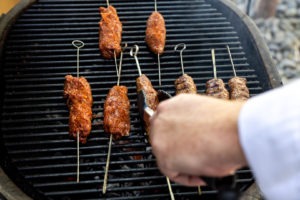
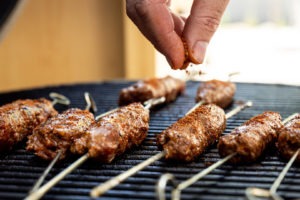
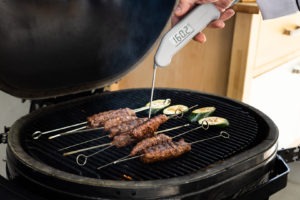
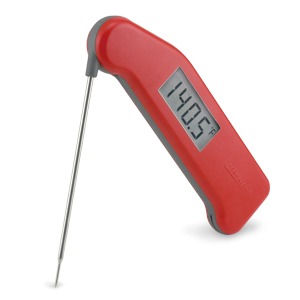
I have nice quality metal skewers, but always wondered if these are really needed for kufta. Can’t you just roll them on the grill like a hot dog?
Jim,
You can just roll them, but the skewers are nice for handling, not to mention presentation. The skewers are a remnant of cooking directly over a bed or bank of coals without a grill grate, I imagine.
Awesome recipe!made some homemade sourdough garlic naan to go with it. A definite Do Again!
That sounds delicious!
I’m not someone who shies away from salt. But just reading this recipe, I thought “That’s a lot of salt!” So when I made it (with chicken because some family members won’t eat lamb), I cut the salt in the meat mixture by 25%. It wasn’t enough—especially if you follow the directions to keep sprinkling more salt on the kebabs while they cook.
I may try again using lamb and perhaps half the recommended salt. But my advice is to avoid this recipe as written unless you are an extreme salt lover. Is it worth all the fuss? I’ll let you know next time. So far, I’d have to say no.